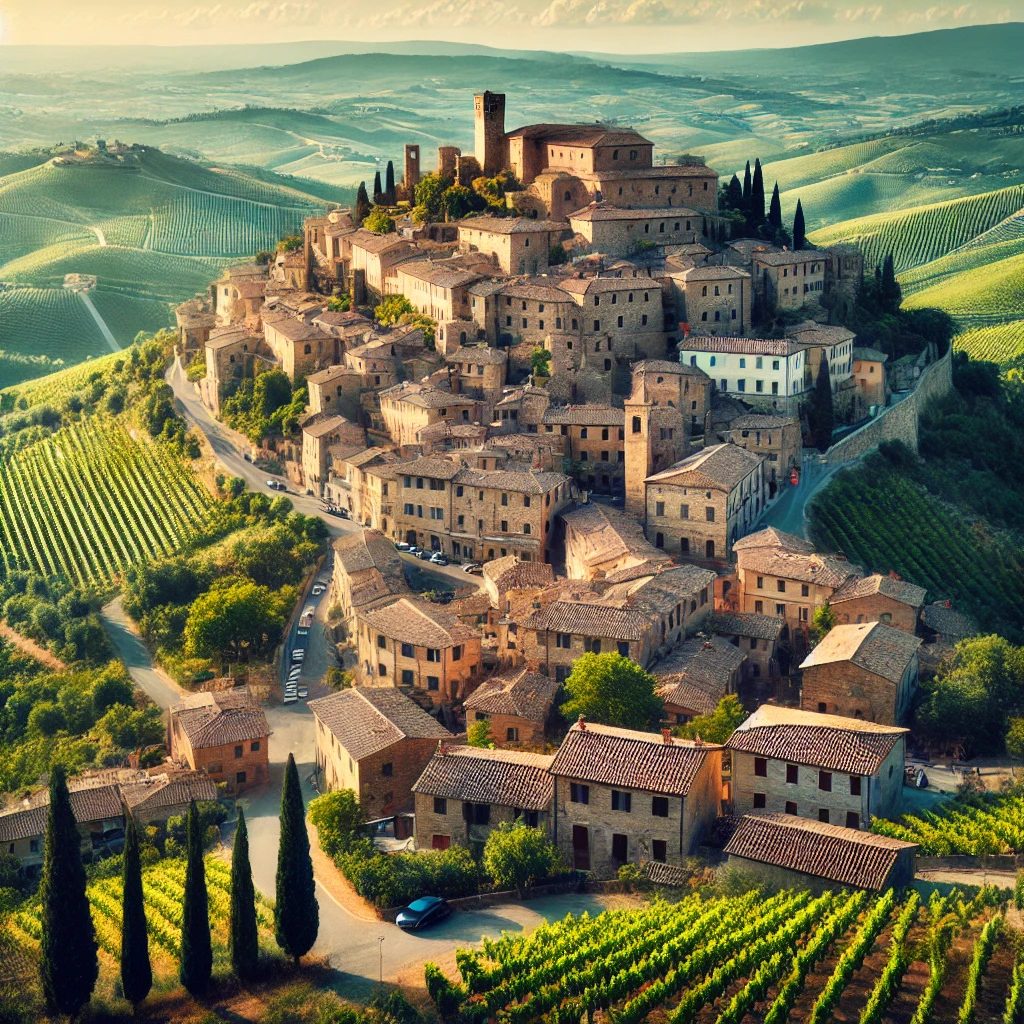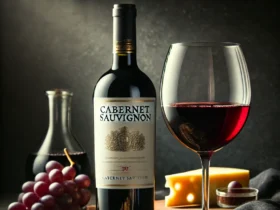Introduction
Montalcino is a picturesque hilltop town located in the Tuscany region of Italy, renowned worldwide for its exceptional wines, particularly Brunello di Montalcino. This charming medieval town is steeped in history and culture, offering visitors a unique blend of stunning landscapes, rich heritage, and world-class viticulture. The area’s unique terroir and dedication to quality winemaking have made Montalcino a prestigious name in the world of wine.
The Town of Montalcino
Montalcino is situated about 42 kilometers south of Siena, nestled in the rolling hills of Tuscany. The town’s medieval architecture, narrow streets, and impressive fortress provide a glimpse into its storied past. The region’s favorable climate, characterized by warm summers and mild winters, along with diverse soil types, makes it an ideal location for growing high-quality grapes.
Brunello di Montalcino
Brunello di Montalcino is the flagship wine of the Montalcino region and is considered one of Italy’s greatest wines. It is made exclusively from Sangiovese grapes, known locally as Brunello. The production of Brunello di Montalcino is governed by strict regulations to ensure the wine’s quality and authenticity.
Characteristics of Brunello di Montalcino
- Grape Variety: 100% Sangiovese
- Aging Requirements: Brunello di Montalcino must be aged for a minimum of five years, with at least two years in oak barrels and four months in the bottle. For the Riserva designation, the aging period extends to six years.
- Flavor Profile: The wine is known for its deep color, intense flavors of red and dark berries, and complex aromas that include floral, earthy, and spicy notes. With age, it develops rich tertiary characteristics such as leather, tobacco, and balsamic nuances.
- Pairing: Brunello di Montalcino pairs beautifully with rich meats, game, hearty pasta dishes, and aged cheeses.
Rosso di Montalcino
Rosso di Montalcino is often considered the “younger brother” of Brunello di Montalcino. It is made from the same Sangiovese grapes but is designed for earlier consumption. Rosso di Montalcino is aged for a shorter period, usually around one year, offering a fresher, more approachable expression of the Sangiovese grape.
Sant’Antimo and Moscadello di Montalcino
In addition to Brunello and Rosso, Montalcino produces other notable wines:
- Sant’Antimo: A DOC designation for a range of wines, including red, white, and sweet varieties. It allows for the use of international grape varieties, offering winemakers more flexibility.
- Moscadello di Montalcino: A sweet wine made from Muscat grapes, available in still, sparkling, and late-harvest styles. It is known for its aromatic qualities and refreshing sweetness.
The Montalcino Wine Region
The Montalcino wine region covers a relatively small area, but it is densely populated with vineyards. The diverse soil composition, ranging from clay to limestone and volcanic soils, contributes to the unique characteristics of the wines produced here. The region’s elevation and microclimates also play a crucial role in shaping the distinct qualities of its wines.
Visiting Montalcino
Montalcino is a popular destination for wine lovers and tourists seeking to experience the beauty of Tuscany. The town offers numerous wineries where visitors can enjoy wine tastings and tours, gaining insights into the winemaking process and the region’s history. Additionally, Montalcino boasts charming restaurants, artisanal shops, and cultural sites, making it a perfect spot for exploring Tuscan culture and cuisine.
Conclusion
Montalcino stands out as a beacon of quality and tradition in the world of wine. Its renowned Brunello di Montalcino and other wines showcase the unique terroir and winemaking expertise of the region. Whether you’re a seasoned oenophile or a casual wine enthusiast, Montalcino offers an unforgettable experience through its exceptional wines and enchanting landscapes.
Montalcino FAQ
1. What is Montalcino known for?
Montalcino is a town in the Tuscany region of Italy, renowned for producing some of the world’s finest wines, particularly Brunello di Montalcino. The town is also known for its picturesque landscapes, medieval architecture, and rich cultural heritage.
2. What is Brunello di Montalcino?
Brunello di Montalcino is a prestigious red wine made exclusively from Sangiovese grapes, known locally as Brunello. It is characterized by its deep color, intense flavors, and complex aromas. The wine is aged for a minimum of five years, with at least two years in oak barrels, and is known for its excellent aging potential.
3. What is the difference between Brunello di Montalcino and Rosso di Montalcino?
Brunello di Montalcino and Rosso di Montalcino are both made from Sangiovese grapes, but they differ in aging requirements and intended consumption:
- Brunello di Montalcino: Aged for a minimum of five years, with a rich, complex flavor profile and significant aging potential.
- Rosso di Montalcino: Aged for a shorter period, usually around one year, resulting in a fresher, more approachable wine that is ready to drink sooner.
4. What is Sant’Antimo wine?
Sant’Antimo is a DOC designation for a range of wines produced in the Montalcino region. It includes red, white, and sweet wines and allows for the use of international grape varieties. This designation offers winemakers flexibility in blending and production styles.
5. What is Moscadello di Montalcino?
Moscadello di Montalcino is a sweet wine made from Muscat grapes. It is available in still, sparkling, and late-harvest styles. Moscadello is known for its aromatic qualities and refreshing sweetness, making it a popular choice for dessert pairings.
6. How should Brunello di Montalcino be served?
Brunello di Montalcino is best served at a temperature of 16-18°C (60-65°F). Decanting the wine before serving can help to aerate it, allowing the complex aromas and flavors to fully develop.
7. What foods pair well with Brunello di Montalcino?
Brunello di Montalcino pairs well with rich and flavorful dishes, such as:
- Red meats (beef, lamb, game)
- Hearty pasta dishes with robust sauces
- Truffle-infused dishes
- Aged cheeses like Parmigiano-Reggiano and Pecorino
8. Can Montalcino wines be aged?
Yes, many wines from Montalcino, especially Brunello di Montalcino, are known for their excellent aging potential. These wines can develop more complex flavors over decades when stored properly in a cool, dark place.
9. What is the best time to visit Montalcino?
The best time to visit Montalcino is during the spring (April to June) and fall (September to October) when the weather is mild, and the vineyards are lush. These seasons also coincide with key wine-related events and festivals in the region.
10. How can I experience wine tasting in Montalcino?
Montalcino offers numerous opportunities for wine tasting at local wineries and vineyards. Many wineries provide guided tours, tastings, and the chance to learn about the winemaking process. It is advisable to make reservations in advance, especially during peak tourist seasons.







Leave a Reply